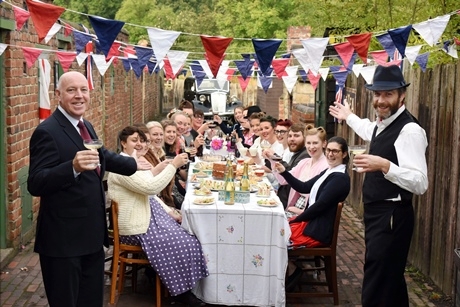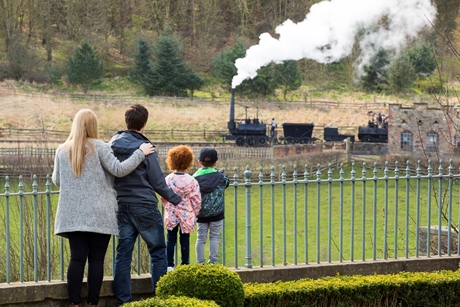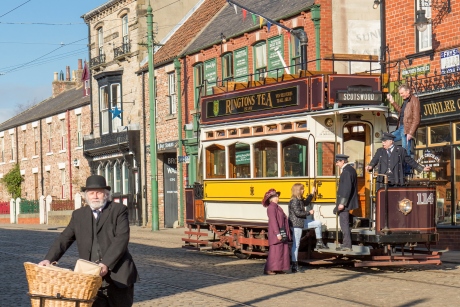Beamish The Living Museum of the North has recently been granted a £10.9 million grant in order to expand its offering. STO looks at the new attractions that will become available for school visits.

From now until 2020, Beamish The Living Museum of the North will undergo a massive expansion.
The project, called ‘Remaking Beamish’, will see the construction of an entire 1950s town and a 1920s landscape area.
In total more than 30 new attractions and exhibits will be created for the museum site including moved or replicated buildings from the region.
The expansion in detail
The following will be added as part of the expansion:
Cinema – The Grand Electric Cinema from Ryhope has been donated and will be relocated to the museum.
Community centre – A replica of the Coundon and Leeholme Community centre will tell the story of community life in the 1950s.
Aged Miners’ homes – Four aged miners homes from Marsden Road, in South Shields will provide a dedicated centre for people living with dementia.
Norman’s Cornish’s house – The former home of the artist Norman Cornish will be replicated at the museum, complete with his studio and furniture that has been donated.
John’s café – The popular café from Wingate will be recreated and will feature the original interior.
Semi- detached houses - Ester Gibbon’s 1950s built home in Red House in Sunderland was voted to be replicated in the 1950s town.
Shops – Shops from Bow Street in Middlesbrough will be replicated, including a toy shop and hairdressers and a fish and chip shop.
Airey house – A post-war pre-fabricated Airey house from Kibblesworth has been collected.

Pictured: Family at Beamish The Living Museum of the North
Bowling green – Billingham Bowling Club green is set to be copied to help tell the story of 1950s leisure.
Police house – A pair of police houses and their offices will be recreated at the museum with some original features from the buildings in Gateshead.
1950s Upland Farm – Spain’s Field Farm in Weardale is being moved to the museum where it will be rebuilt to tell the story of rural life.
1820s landscape - This will include: a coaching inn where visitors will be able to stay overnight; Joe the Quilter’s cottage which will include items from the remains of his house; 1820s industry representation including a pottery and blacksmiths; a windmill recreated from Northumberland that was originally shipped from Sweden.
Transport- a new trolleybus and general bus depot will transport visitors around the museum.
Once the expansion is completed, schools will get the chance to stay overnight in the museum.
Business as usual
Despite the renovation, the museum will remain open for visitors throughout the year.
The museum is already an ideal location for school trips, offering LOtC experiences in a range of subjects.
Learning experiences and activities are available for pupils in both Primary and Secondary education and across all Key Stages.
On arrival, school pupils will be greeted by costumed demonstrators when entering the museum and groups are offered special educational talks about the history that the museum represents along with other historical periods.
Other subjects that the museum covers include: Business, where Secondary school students can experience a discussion about the running of the museum; travel, which includes talks and tours about industrial transport; and thinking skills, where pupils are invited to a murder mystery game.
The James White - Local History Coal Mining Enquiry activity allows students to investigate the death of a young miner. For this activity pupils will have to interview different people around the museum in order to discover what happened.
Pupils can also get the opportunity to experience a Victorian lesson which teaches writing, reading and arithmetic. The activity will be led by a costumed demonstrator who will take on the role of a Victorian teacher.
The museum offers activities tailored to suit each Key Stage and allows pupils to compare life in the past to life now.
Before visiting, teachers can download guides for all the educational talks and lessons, in order to aid their school’s learning experience when at the museum.
The museum also has a small fairground for schools to enjoy, that includes steam gallopers, shuggy boats and a coconut shy, and souvenir bags can be pre-arranged for pupils to take home with them after their visit.
More learning experiences and resources include medicine, tourism and debating.
Beamish aims to expand the stories that it already tells from the 19th century whilst improving the quality of experience for schools and other visitors.

Pictured: Replicated street and tram at Beamish The Living Museum of the North
History of Beamish
Beamish The Living Museum of the North was first created after Frank Atkinson, museum director, visited Scandinavian folk museums during the 1950s.
This inspired him to construct an open air museum. He believed the constantly changing region was losing its industrial heritage; coal mining, iron and steel manufacturing and ship building were all disappearing along with the people and communities that were involved in them.
Frank set out with the aim to create a museum that represented the way of life of ordinary people and to bring the history of the region and era alive.
The museum today remains loyal to Frank Atkinson’s aims and brings thousands of visitors in each year.
For more information visit www.beamish.org.uk, phone 0191-370 4000 or email museum@beamish.org.uk.










